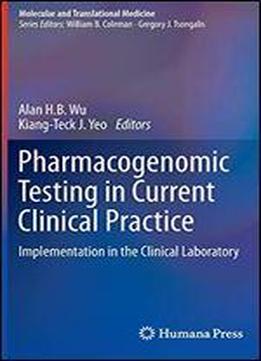
Pharmacogenomic Testing In Current Clinical Practice: Implementation In The Clinical Laboratory (molecular And Translational Medicine)
by Kiang-Teck J. Yeo /
2011 / English / PDF
5.3 MB Download
While the basic principles of personalized medicine and pharmacogenomics has been covered by numerous texts, there are none to date that focuses on the specific tests themselves that are in current clinical practice and those that are being proposed for implementation in the near future. Pharmacogenomic Testing in Current Clinical Practice: Implementation in the Clinical Laboratory focuses almost entirely on the specifics of each test that is needed to implement these tests into a clinical laboratory. This volume presents the first compilation of the tests currently in routine clinical use. The chapter authors of this unique and invaluable title comprise a range of renowned authorities and investigators who have conducted the essential clinical trials necessary to justify pharmacogenomic testing today. The book is divided into four parts: Basic Concepts, Specific Pharmacogenomic Targets, Drugs that Cause Delayed Hypersensitivity, and Miscellaneous Drugs. Each author provides a pharmacologic background on the target drug, the need for pharmacogenomic testing, and how results can be translated into clinical decisions. Where appropriate, case studies are given to illustrate typical clinical scenarios. An extensive bibliography is provided so that the reader can refer to the original studies. This well-designed resource will appeal to clinical laboratory directors who are contemplating or assigned the task of establishing a pharmacogenomics laboratory and a wide range of clinicians who must interpret results of testing. Focused and immensely useful, Pharmacogenomic Testing in Current Clinical Practice: Implementation in the Clinical Laboratory is a timely and outstanding contribution to the literature and will be instrumental in defining this rapidly growing field.











